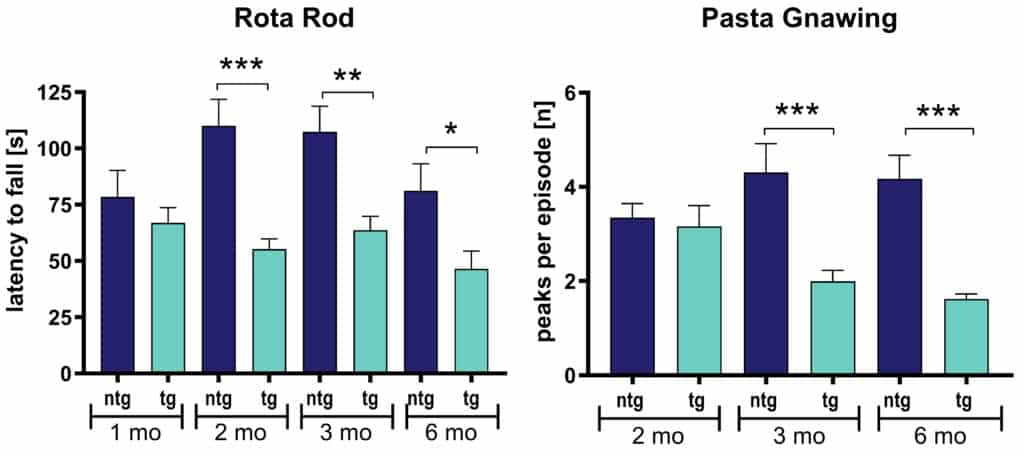This transgenic mouse model overexpresses wild type human α-synuclein under the regulatory control of the murine Thy 1 promoter. The cellular expression is more widespread compared to the D-Line model, featuring high human α-synuclein mRNA levels in most brain areas. Line 61 mice show a pathological accumulation of human α-synuclein protein in cortical and subcortical regions of the brain, including the substantia nigra. Immunoreactivity is present in neuronal somata and presynaptic terminals.
The Line 61 mouse model is thus well-suited for studies that aim at human α-synuclein. Measurable behavioral differences compared to non-transgenic littermates start at about 2-4 months of age, depending on the behavioral test.
The most important characteristics of Line 61 mice are:
- Age-dependent increase of α-synuclein in the brain
- Neuromuscular abnormalities
- Severe motor deficits
Progressive motor deficits of Line 61 mice are shown in Figure 1.

Figure 1: Motor deficits in Line 61 transgenic mice compared to age-matched non-transgenic (ntg) littermates. A: RotaRod test of 1 – 6 months old Line 61 mice. B: Pasta gnawing test of 2 – 6 months old Line 61 mice. n = 10-15. Mean + SEM; Two-way ANOVA with Bonferroni`s post hoc test. *p<0.05; **p<0.01; ***p<0.001.
Scantox offers a custom-tailored study design for Line 61 mice, and we are flexible to accommodate your special interests. We are also happy to advise you and propose study designs. Line 61 mice show a relevant Parkinson’s disease (PD) phenotype at 1 month of age. This grants a remarkable fast processing time of your PD study. Furthermore, non-transgenic littermates are available as control animals needed for proper study design.
We are happy to evaluate the efficacy of your compound in the Line 61 mouse model! The most common readouts are:
